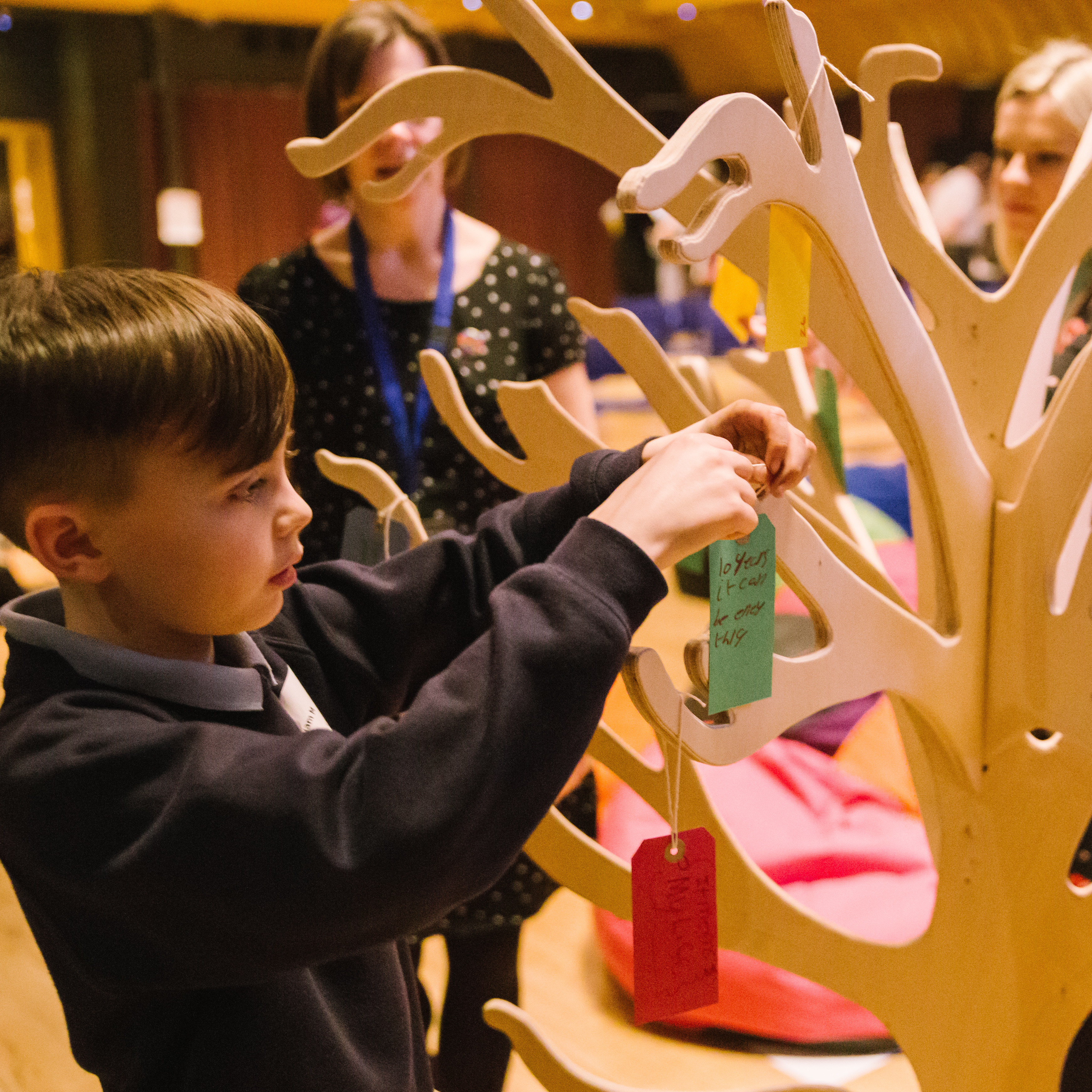Young people ‘must be able to help shape life of museums’, participation project finds
20 January 2022
MEDIA RELEASE
Major reforms are needed to make museums more accessible, inclusive and relevant to young people, according to a new report published today.
The Living Museums project, delivered by national charity Children in Scotland from June 2020 - December 2021, aimed to ensure that 14-21-year-olds were included and heard within museums and that their views and experiences were represented.
Recommendations made in the project’s final report address changes required to better recognise young people’s right to participate fully in cultural life; improve staff training on participation; and strengthen collaboration to make museum content more appealing for younger audiences.
They include:
- Funding bodies in the heritage sector should continue to provide opportunities for museums to engage with young people on projects that are led directly by them, and allow them to share their views and experiences
- A training and development package should be rolled out by national heritage and culture organisations to support engagement and co-design work in museums and heritage settings
- All museums should be supported to develop an advisory group or board so young people can feed into their ongoing work
- Leaders in the museum sector need to push for a change in approach that moves away from KPIs focused on targets of ‘numbers of young people engaged with…’ towards high quality, ongoing engagement
- Museums should be encouraged to undertake Child Rights and Wellbeing Impact Assessments on their work to ensure they are embedding children’s rights and maximising the impact of their work
- Museums should explore new, relevant issues with young people through co-design projects, and build these into museum programmes
- Recruitment for roles in the museum and heritage sector should aim to actively encourage staff with a background in community engagement or participative approaches.
- Whilst recognising that a lot of good practice already exists within the heritage sector in terms of engagement with young people, the report stresses that this must be strengthened.
The project worked across three different museums in Perth and Kinross, Stirling and Dumfries and Galloway, bringing together museum partners and youth work organisations in each of these three localities.
Groups of young people were recruited in the three project areas to engage with local partners and establish new ways of involving 14-21-year-olds in the sector. Each group also devised their own exhibitions, which ran in the project areas last autumn.
The report’s author and project lead Chris Ross, Senior Policy Officer at Children in Scotland, said:
“Living Museums has shown routes for engaging young people and highlighted that co-design approaches can support a sustainable future by engaging new audiences and creating links that will last beyond the life of the project.
“However, commitments to changing approaches are needed. Participation of communities needs to be at the heart of future strategic planning in the sector, such as that currently being conducted by Museums and Galleries Scotland.
“There needs to be a package of training rolled out to support staff within and across the sector to develop their knowledge and understanding of participation and engagement. Responsibility for participation and engagement also needs to be embedded within senior roles to ensure that it is promoted.
“There is a desire to take this work forward from our project partners and we look forward to seeing where that leads. However, it will also require systemic change to move to a place where museums are truly spaces for and by young people which they feel ownership of.”
“As the project concludes, we’d like to thank our projects partners, our funders – and particularly all the young people who took part.”
Click here to download the report
Click here for more information about the project
Media contact: Chris Small, csmall@childreninscotland.org.uk
Notes for editors:
The Living Museums project was funded by the National Lottery Heritage Fund and Historic Environment Scotland, with the support of Holywood Trust and Fort Teviot Foundation. It brought together young people, youth workers and museum staff to develop new approaches to supporting young people’s engagement with museums.
It built on Children in Scotland’s learning from our Heritage Hunters project (click here to learn more).

Living Museums Project Final Report
The end of project report highlights successes and how to maintain the momentum
Click here to download
Open door policy
Blog: Chris Ross on the potential for the museums sector to share its value with a young audience
Click here to read
Living Museums
Working in partnership with the museums sector to engage young people
Click to visit the project page
Participation and engagement guidelines
Refreshed guidance, putting young people at the heart of engagement work
Click here for more
Our Manifesto for 2022-26
Our Manifesto is backed by organisations from across the children's sector
Click here for more
Evidence bank
A unique resource which directly captures the views of children and young people
Click to visit the website
















